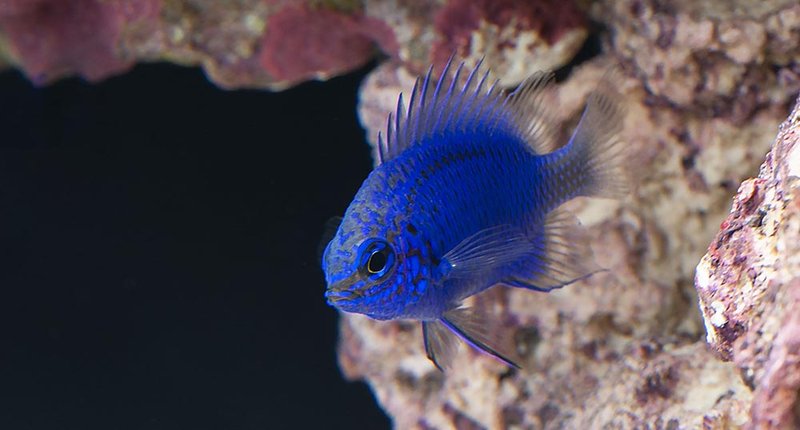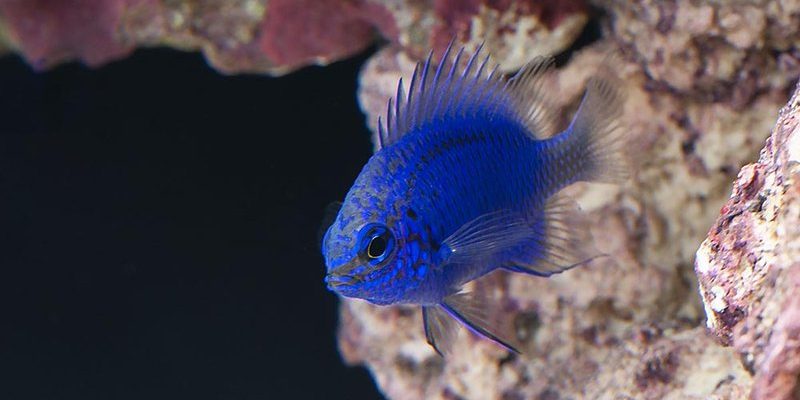
Think of it this way: breeding damsel fish is like hosting a family reunion. You need to provide a comfortable environment, set up the right atmosphere, and ensure that everyone gets along. With patience and the right tips, you can enjoy the success of nurturing little fishy families right in your home.
Understanding Damsel Fish Basics
Before you jump into breeding, it’s crucial to know a bit about damsel fish themselves. These colorful characters come from the family Pomacentridae and are widely popular in home aquariums. They can be found in various species, with some of the more common ones being the Clarkii, Blue Devil, and Yellowtail damsels. Knowing the specific type you have is important, as some species have different breeding habits and requirements.
Damsel fish are generally small, ranging from about 2 to 6 inches in length. They can display some territorial behavior, especially males during breeding. This might sound concerning, but it’s just their natural instinct kicking in. They often form strong pairs, so if you’re setting up a breeding environment, having a healthy male-female duo is key.
You might be wondering what makes damsel fish so special for breeding. They are hardy and adaptable, making them ideal for beginners. Plus, their fry can be relatively easy to raise compared to other species, which often struggle in captivity.
Creating the Perfect Breeding Environment
To successfully breed damsel fish, you’ll first need to create a comforting habitat. Think of this as building a cozy nest. A well-maintained, established tank is crucial, so let’s discuss some key elements you’ll want to include:
1. Tank Size: A tank of at least 30 gallons is often recommended for breeding damsel fish. It gives the fish ample swimming space and allows them to establish territories without feeling cramped.
2. Water Conditions: Damsel fish prefer water that’s slightly warm and saltier than your average freshwater setup. Aim for a temperature between 75°F and 80°F, with a salinity level of around 1.020 to 1.025 specific gravity. Regular water changes will help maintain the overall health of your fish.
3. Hiding Spots and Nesting Sites: Damsel fish are more likely to breed if they feel safe. Adding rocks, caves, and other decorations can provide essential hiding spots and nesting areas. They often prefer flat surfaces like rocks or coral for laying their eggs.
Creating the right atmosphere isn’t only about comfort but also about reducing stress. Fish that feel secure are more likely to spawn—it’s a natural instinct for them after all!
The Breeding Process: Timing and Behavior
Alright, you’ve got your setup. Now, it’s time to dig into the breeding process itself. Breeding damsel fish generally occurs during specific times of the year, usually when the water temperature rises. Here’s what you can expect when your fish are ready to spawn:
1. Courtship Rituals: Male damsels often engage in courtship displays to woo the female. You might see them perform some fancy swimming moves and flaring their fins. It’s like a little dance! This is a good sign that they’re gearing up to breed.
2. Egg Laying: Once the female is ready, she’ll lay eggs on a chosen surface—usually a flat rock. The male will then fertilize the eggs. Depending on the species, the female can lay several dozen to hundreds of eggs at a time!
3. Parental Care: After laying the eggs, the male typically takes charge. He protects the eggs, fanning them with his fins to ensure proper oxygen flow. This attention is crucial for the eggs’ survival, as they can be vulnerable to other tank inhabitants.
You might notice some territorial behavior during this time, especially from the male. He might chase away other fish that wander too close to the nest. This is completely normal and part of their instinct to safeguard their future fry.
Raising Damsel Fish Fry
Once those little eggs hatch, you’re in for a whole new adventure! Raising damsel fish fry can be both rewarding and a bit challenging. Here’s what to keep in mind:
1. Timing of Hatching: The eggs will typically hatch in about 3 to 7 days, depending on the water temperature and species. Once they hatch, the fry will be free-swimming in search of food.
2. First Foods: Damsel fry are tiny and need appropriate food to grow. Start with infusoria or liquid fry food. As they grow, you can introduce larger foods like baby brine shrimp. Think of it as offering them tiny, bite-sized treats!
3. Maintain Water Quality: Young fry are delicate, so keep an eye on water conditions. Frequent water changes and monitoring ammonia levels are crucial to prevent any spikes that could harm them.
Raising fry can feel like a rollercoaster ride! You’ll experience moments of joy and challenges, but with patience, you can successfully grow your little damsels into thriving fish.
Common Challenges in Breeding Damsel Fish
Breeding damsel fish isn’t without its obstacles. Here are some common issues you might face and tips to navigate through them:
1. Aggression: Damsel fish can be quite territorial, especially males. If you notice excessive fighting, consider providing more hiding spots in the tank or separating aggressive individuals to ensure a peaceful breeding environment.
2. Egg and Fry Loss: Unfortunately, not all eggs will survive. Predation from other tank inhabitants or poor water quality can lead to losing eggs and fry. Keeping a species-specific breeding tank can mitigate this risk.
3. Feeding Struggles: Getting fry to eat can be tricky at first. If they’re not responding, try different types of food or adjust the feeding frequency to find what works for them.
Dealing with these challenges can be a bit disheartening, but remember, it’s a learning experience. Don’t get discouraged—many aquarists face similar hurdles.
Breeding damsel fish in captivity can be a delightful journey filled with ups and downs. Even if it feels a bit overwhelming at times, remember that every seasoned aquarist started somewhere. By creating a suitable environment, understanding their behavior, and navigating the challenges together, you can foster a thriving little family of these vibrant fish.
So, get your tank ready, keep an eye on those lovebirds, and soon enough, you might witness the magic of tiny fish fry swimming around your aquarium. Happy breeding!

